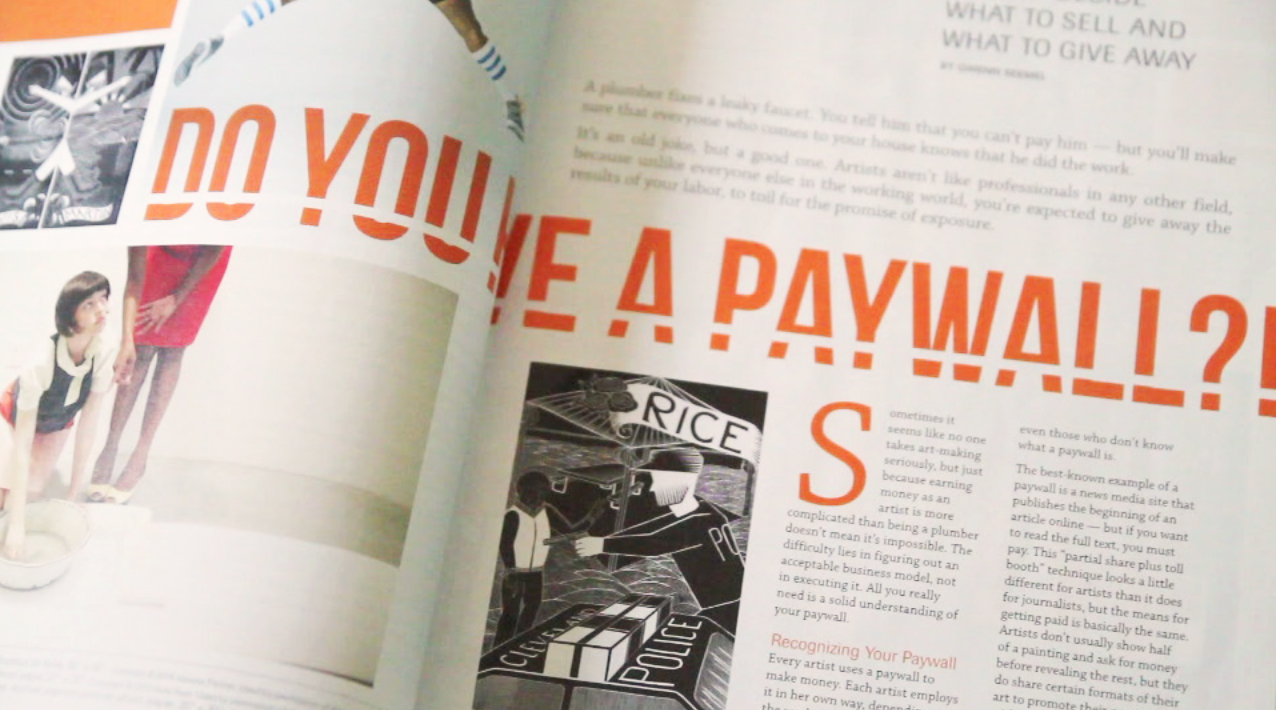
Newsletter
Newsletter
We discuss how to meet the challenge of balancing reader revenue with other sources of income for publishers.
8th June 2023

In the Pugpig weekly media bulletin, Pugpig’s consulting services director Kevin Anderson and digital growth consultant James Kember distill some of the best strategies and tactics that are driving growth in audiences, revenue and innovation at media businesses around the world.
By James
When the Reuters Institute for the Study of Journalism produced their predictions for 2023 in January, over two thirds of the media leaders they spoke to still expected some growth in subscriptions through 2023. However, there was another key theme emerging: Diversification, particularly through growth of native advertising. Both native advertising and subscription activities benefit from a strategy that drives volume and engagement. The perception that they are conflicting revenue tactics is often shortsighted. However, there will always be some level of friction, and the question of how to balance an advertising strategy with a paywall is a key issue that publishers need to solve.
Both Time and Quartz have have decided that this balancing act is not one that they’re able to juggle. As of Thursday 1 June, all of Time’s online content has been moved out from behind the paywall and made free to access. They’ll still charge for their digital version of the print magazine and for the print product, however.
This is the latest in a long series of iterations of Time’s approach to digital content. Having initially launched a paywall back in 2011, Time has since carried out numerous experiments in an attempt to optimise the experience and maximise revenue. The last iteration of this was a metered approach where users could read up to four articles before hitting the paywall. Up until recently the strategy was showing green shoots of success, and at the last count, they had reached 250,000 digital subscribers. However, whilst this is a reasonably impressive number, Time has over 1.3 million print subscribers and their print to digital ratio is inverted when compared to market leaders. The New York Times, for example, has 8.8 million digital subscribers, compared to 730k print subs.
The removal of the paywall is one of the first acts of new Editor Sam Jacobs who was appointed in April of this year and CEO Jessica Sibley who joined from Forbes in November. Their reasoning, as reported by the Press Gazette, is twofold. It’ll make it easier for Time to market their content, reaching a larger audience who they can monetise via non-subscription funnels. It is also philosophical. Sibley believes that “access to trusted information is a global imperative and should be available to all of humanity”. She is concerned about the digital divide and the access to information for those that can’t afford a subscription fee. However, digital makes up a smaller fraction of their overall subscriber base so commercially it’s an easier decision for Time than it would be for many other news publishers.
At Pugpig consulting, when we speak to our clients about how to manage subscription, advertising and diverse revenue strategies we stress that balance is key. We believe that the best approach is to focus on driving engagement from the audience to build an understanding of how likely a user is to subscribe and using this data to segment users based based on their propensity to engage with different revenue strategies. If a user is likely to subscribe, offer them a subscription. If they’re unlikely to pay for content, focus on advertising, events or e-commerce. Our partner Piano has a great case study of working with a legacy publishing company to establish likelihood to subscribe (LtS) modelling, allowing for only relevant users to be targeted with subscription messaging, reducing the impact on other revenue streams.
As we wrote in this bulletin two weeks ago the platform era is over and publishers can no longer rely on Facebook to drive cheap traffic. Whilst SEO remains vital, times are uncertain and the impact of AI integration into search is unknown. But the fear is that it’ll lead to more traffic remaining within the Search ecosystem with fewer referrals to publishers’ sites. Therefore, any strategies that rely on traffic as the central component are at risk of repeating the mistakes of the past. Indeed, lots of the conversations we are having are about how to drive a deeper relationship with users and the removal of a paywall takes away one of the most important components to doing this, capturing the email address.
In an interview with Axios, Sibley said that she doesn’t think Time will “be alone or not followed by others’” with their new approach. We will be watching to see if the strategy pays off. Whilst it is unlikely to be an approach that the majority of publishers will choose, for those that have struggled with digital subs acquisition and have the ability to monetise users through diversified revenue streams there’ll be a decision to be made if Time can lead the way.
By Kevin
Speaking of revenue diversification, membership programmes have proliferated with the growth of non-profit news organisations and grant-funded news start-ups and as other publishers look for additional revenue.
Publishers hope membership programmes will drive greater revenues and deliver higher retention rates. In recent years, magazines such as Empire have been exploring adding membership programmes as an extension to their subscription offerings.
And there is proof that it can work. The Daily Maverick in South Africa launched its membership programme in 2018, and now 30% of its revenue comes from membership. That revenue has allowed the news organisation to expand its overall staff by 300%.
But what differentiates membership offerings from subscriptions? Couldn’t membership be seen as another more premium subscription tier?
The Membership Puzzle Project investigated the trend in the US and found: “Inspiring membership-driven organizations connect individuals’ passions to a shared larger purpose. They sell more than a product or a cause. Successful membership organizations recognize and celebrate the individual while making them feel connected to something bigger than themselves.”
They looked at membership largely through the lens of mission-driven news organisations, but communities can be built around a shared passion for film and TV such as Empire VIP or around personal passions such as food or walking in the countryside. Speaking to the Press Gazette in 2021, then editor of Empire, Terri White, said, “We see VIP (their membership programme) as a way to deepen the bonds with our community.”
However, audience and community should not be used interchangeably anymore than subscription and membership are synonymous. For the marketers reading this, membership and community are in the vein of relationship marketing where you are not just providing content but are actively engaging with users and as Hubspot says, creating “meaningful relationships with customers to ensure long-term satisfaction and brand loyalty”.
If you are considering a membership programme, the first question might be where to start. You could follow a strategy that some publishers have followed when considering a subscription programme by launching a registration scheme first and then surveying those users about their interest in becoming members.
Or you could simply launch a minimum viable membership programme like the Daily Maverick did. Before they fully launched, they wanted to answer a few questions, according to the Membership Puzzle Project:
In June 2018, they launched the programme with no additional benefits, just a call for people to become members and support their mission. Their audience responded enthusiastically, and even though they didn’t have the ability to run A/B tests initially, they studied where people signed up, and they surveyed these early members to find out more about why they joined. The Membership Puzzle Project has the full list of the questions that they asked, which included how long the person had been reading the Daily Maverick before they donated, how frequently they visited the site, and the reason why they donated.
By the end of the two-month test, they had 314 recurring members, and 621 people had given them one-time donations. They found that calls to action at the end of articles and to contacts from their newsletter lists were the most effective ways to gain members. They now have 24,000 active members.
Like subscription programmes, retention efforts are key.
In the early phases of their membership programme, it was relatively easy for the Daily Maverick to grow, but after converting the low-hanging fruit of their most engaged audience, it became more challenging. The Membership Puzzle Project found that delinquent churn – issues with payments such as lapsed credit cards or insufficient funds in a bank account – was one of the biggest issues facing the membership programmes of news organisations like the Daily Maverick. The South African news organisation found that frequent contact with members about their credit card details was important, and they even had to show some “grace” and allow people to suspend their memberships if they couldn’t pay for a while.
Apart from delinquent churn, the Daily Maverick found that benefits weren’t a key driver of retention. It has not been about giving them tote bags or creating complicated membership packages. It was more about the relationship that they developed with the organisation and its journalists. “People support us because they have this emotional connection, and that’s very hard to break,” Fran Beighton, General Manager of Reader Revenue at Daily Maverick, told What’s New in Publishing. They maintain this relationship through their newsletters, through contact from their retention manager and also by engaging members with their journalism. A different journalist writes the newsletter each week to keep those relationships vital.
In short:
If you need help in the practical work of balancing your revenue streams or in developing and launching a membership programme, get in touch with us at Pugpig Consulting.
Here are some of the most important headlines about the business of news and publishing as well as strategies and tactics in product management, analytics and audience engagement.

Newsletter

Newsletter

Newsletter

Newsletter

Newsletter